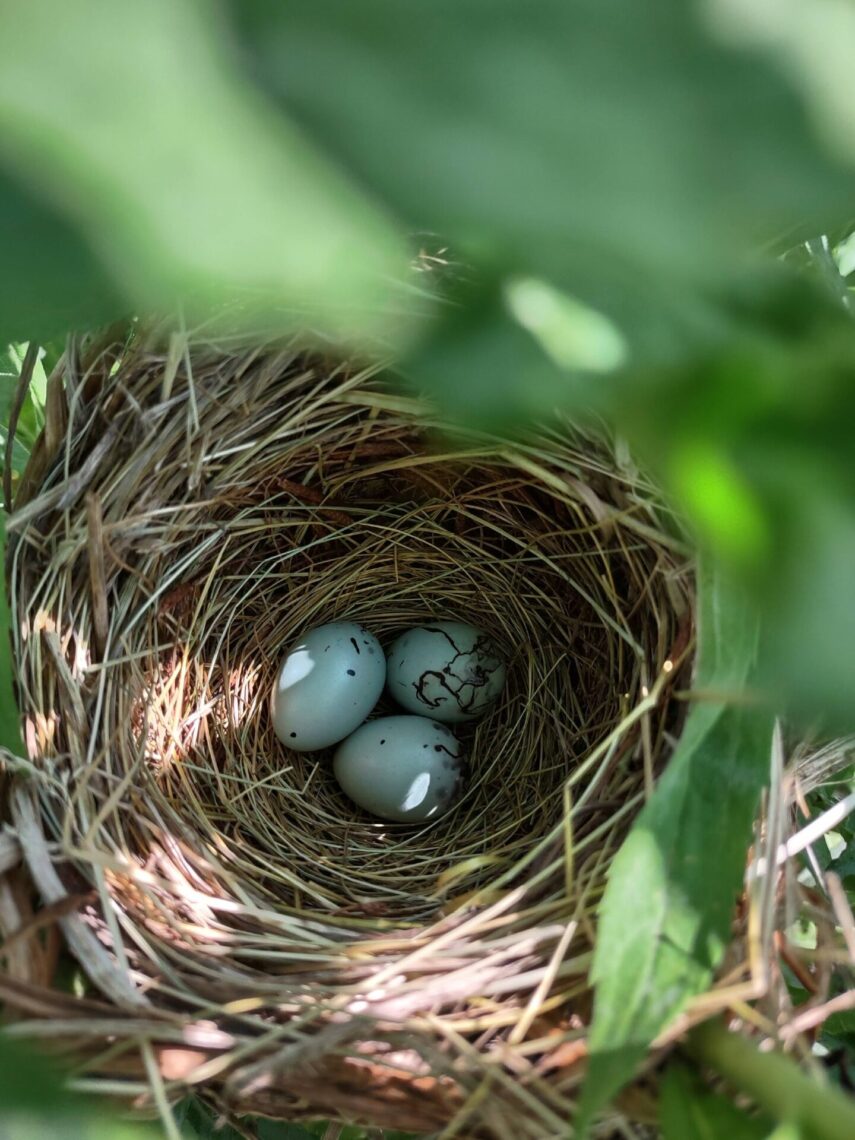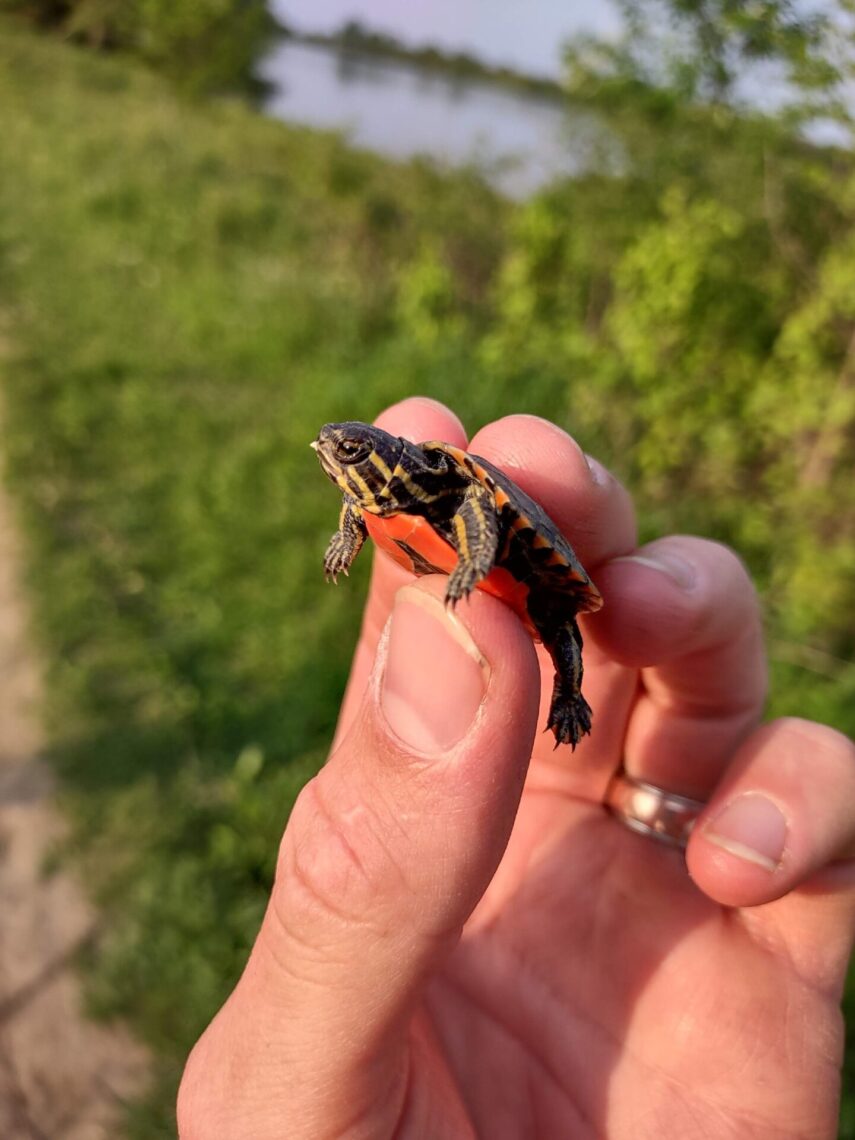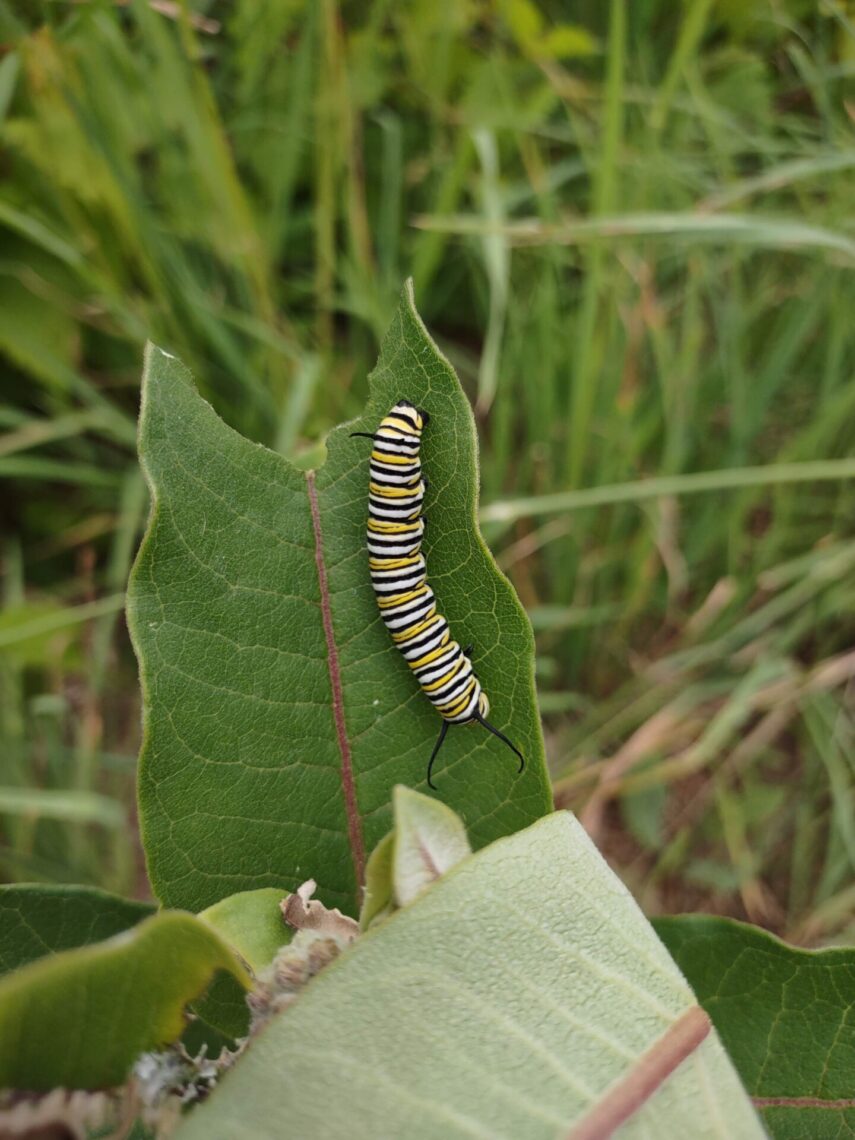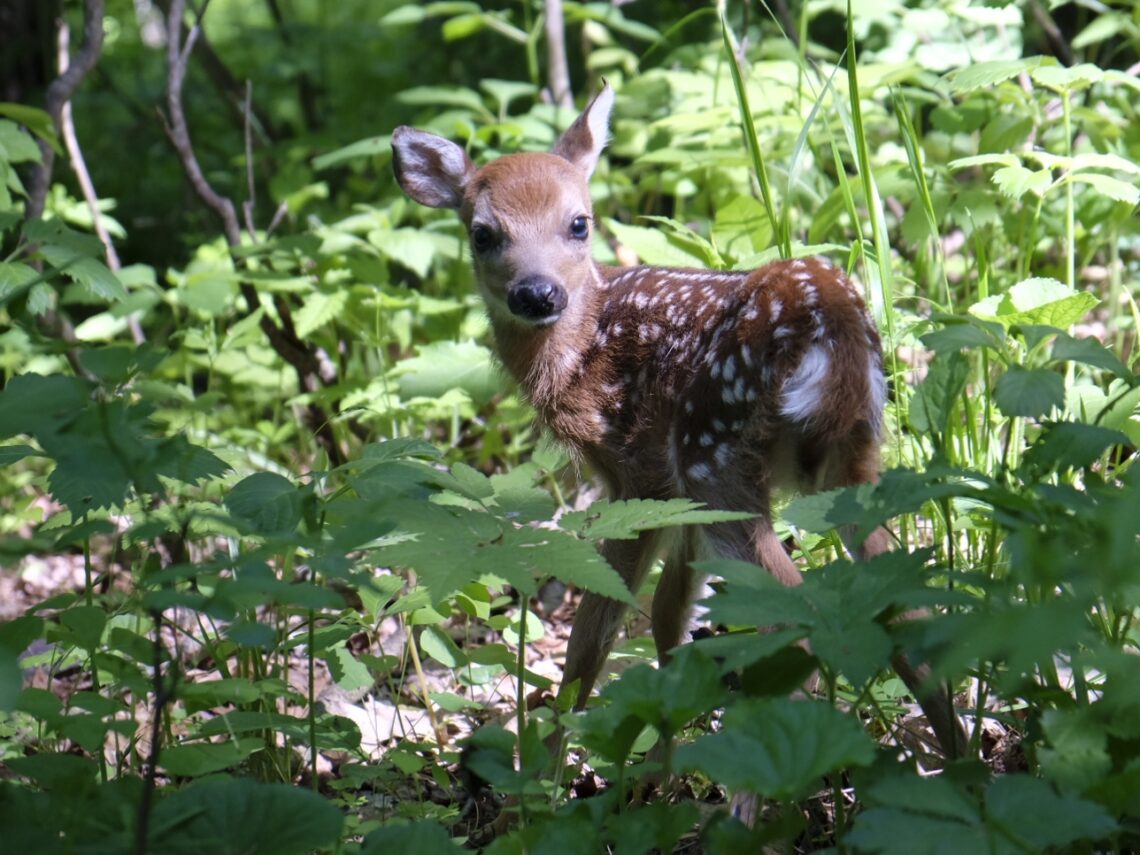Happy summer! I’m not quite sure how spring has already come and gone, but here we are at the beginning of summer and there’s quite a bit going on outside right now. In fact, there’s more going on outside than usual if you include the wildfire smoke that’s kept us indoors this week. As much as I encourage people to get outside and enjoy nature, I hope you’re paying attention to the air quality reports and staying inside when necessary. While you’re inside, let’s take a virtual tour to see what’s going on out there despite the smoke!
If you were to head outside right now, you may discover that birds are nesting. While some birds are discreet nesters, others like red-winged blackbirds are more than happy to tell you all about how their nesting is going. While it’s never happened to me, I’ve heard stories of bicyclists and walkers getting dive-bombed by nesting red-winged blackbirds and chased down the street. They can be pretty territorial when it comes to their nests, so be sure to give them some space unless you want knocking off your hat.
While out at Patrick Marsh, we discovered a baby painted turtle on the side of the trail. I picked it up and moved it further off of the trail so that it wouldn’t get stepped on, but had to take a quick photo before releasing it. They’re one of my favorite types of turtle because of how colorful and plentiful they are. I’ve stumbled across many baby turtles in the past and I always forget just how small they are when they’ve just hatched.
Turtles love nesting on trails and in gravel parking lots because the dirt/sand is the ideal substrate for them to dig in. So if you see a little golf-ball sized hole (sometimes much bigger) on a trail, there’s a good chance a turtle deposited some eggs in there.
Now is the time to start checking the milkweed in your yard for monarchs! Simply look for leaves that have been chewed up and there’s a good chance that there is a monarch caterpillar not far away. I shouldn’t have to tell you this, but if you find one, make sure you don’t eat it (I know, it’s tough). Because monarch caterpillars feed exclusively on milkweed which contains a toxic sap inside, the caterpillars themselves are actually toxic. In addition to being toxic, they’re also brightly colored with lots of stripes. This combination tells predators that they should stay away unless they want to get sick. Mushrooms are similar in that the extra colorful and bright red ones are usually the ones to stay away from.
Lastly, I’ll leave you with a photo of this white-tailed deer that I spotted while out with my family on a hike. Its knobby knees and wobbly legs made it look like it was straight out of a Disney movie. It was pretty darn adorable and I was extremely pleased with how cooperative it was for a photograph, which is not usually the case with wildlife photography.
Have you ever wondered why fawns have little white spots all over them? It’s to help camouflage them with their surroundings. When a predator is nearby, fawns (usually) have an instinct to lay down and stay still. The white spots on their back break up their silhouette and help mimic the dappled sunlight that would hit the forest floor. Well, I hope you enjoyed my virtual tour and I’ll see you next time!
*Did you miss an article? Check out my collection of past monthly Nature Now articles on our website HERE. Just click the dropdown menu ‘Any Type of News’ and change to ‘Nature Now’ to filter the articles.




